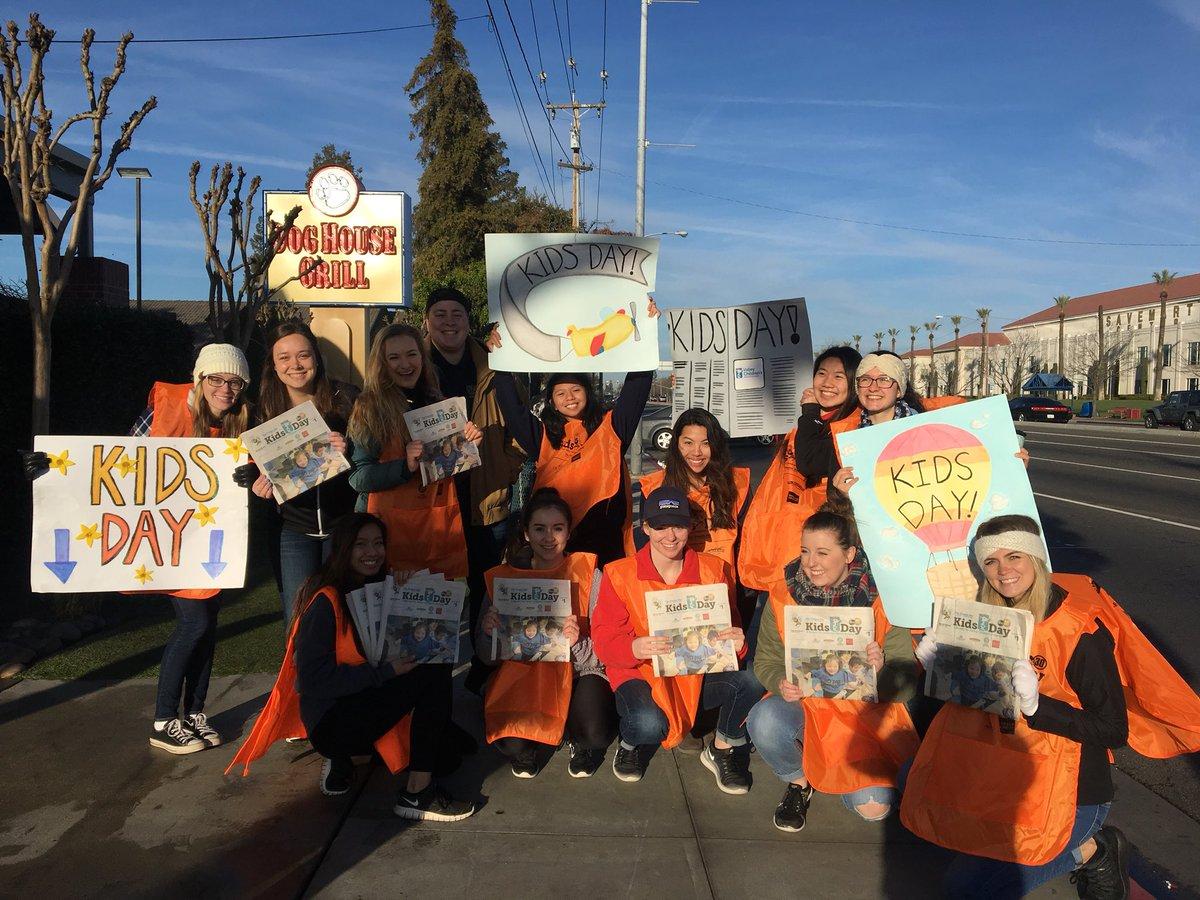Cheering people in bright orange aprons occupied corners of Shaw Avenue Tuesday as commuters stopped to purchase the annual Kids Day special issue of The Fresno Bee.
Thirty years since its premiere, Kids Day, organized by Valley Children’s Hospital, The Bee and ABC30, has brought together nearly 7,000 volunteers across the Central Valley to raise millions of dollars to cover the costs of “uncompensated care.”
The effects of the fundraiser have touched thousands of patients and their families, including some Fresno State students.
Giving back
Holly Wilson was 8 months old when she received care at Valley Children’s. After her adoption from Busan, South Korea, she came to the U.S. “riddled with illnesses,” including soft cleft palate, pneumonia and gastrointestinal problems.

“When my parents told me the story of everything I endured at such a young age, it made me realize how fortunate I was to have been given the opportunity to live my life in the U.S. with a loving family and have the best team of doctors working on me to get me healthy,” she said.
Wilson received treatment and surgeries during multiple hospital stays over the course of three months. Though she says she doesn’t remember much from that time, her story has inspired her to take part in Kids Day as a volunteer to give back to the hospital and to study medicine.

“I love doing it as it is a way that I can give back to those who did so much for me,” Wilson said. “But also it is because of the impact that these doctors have had on my life that I have chosen that I would like to go into the field of medicine in hopes that one day I, too, can impact someone’s life in that manner.”
A sense of comfort
Media, communications and journalism department alumnus and former Collegian staff writer Johnny Martin was rushed to Valley Children’s on his 16th birthday in 2009.
After multiple visits to the doctor for severe headaches, Martin was rushed from Clovis Community Medical Center for a blockage in the third ventricle of his brain. The blockage covered the hole where spinal fluids flow between the brain and the spine.

He received surgical care to relieve the pressure, and was referred to a leading oncologist at University of California, San Francisco to treat the blockage with chemotherapy.
“This was a very overwhelming time in my life but being at Valley Children’s helped ease that a little bit,” he said. “They just had an atmosphere that was not like a normal hospital, even through all the seriousness you just felt a sense of comfortability that made that time much easier.”

Martin said he bonded with a male nurse over sports and common interests which helped him through his stay at the hospital.
“The kind of miracles that place does is indescribable,” he said. “They give so many kids a second chance at life. They helped give me one, and they make the ‘hard times’ that much easier.”
Step by step process
In August 2011, Lauren Torres, a liberal studies major, gave birth to her first child who was born with jaundice. Her mother recommended Valley Children’s.
“It was very scary because I didn’t know what was happening since he was my first baby,” she said. “He was sleeping too much and not eating or having enough wet diapers and [was] very dehydrated.”
She said the staff at Valley Children’s walked them through the treatment process step by step. The family stayed there for a week, and Torres was very appreciative of their care.

“I love the fact that the community helps to raise money for the hospital,” Torres said in regards to Kids Day. “We donate as often as we can when we see places taking donations.”
A happy patient
For Angelina Garcia, her involvement with the hospital post-treatment doesn’t just include Kids Day. Garcia was in her second semester at Reedley College when doctors discovered a tumor in her brain.
She said she had a mixture of emotions during her time at Valley Children’s.

Garcia was treated from April to June in 2014, and she is now a member of the Cancer Survivorship Program. The program enrolls younger patients after their third year of diagnosis and if they complete treatment in order to provide resources for health, group activities and follow-ups.

“I suffered anxiety every minute because I was frustrated with not being able to do things like before,” she said. “I couldn’t walk or eat, anxiety was killing me. However, I would become a happy patient when the therapy dogs would come in my room.”




